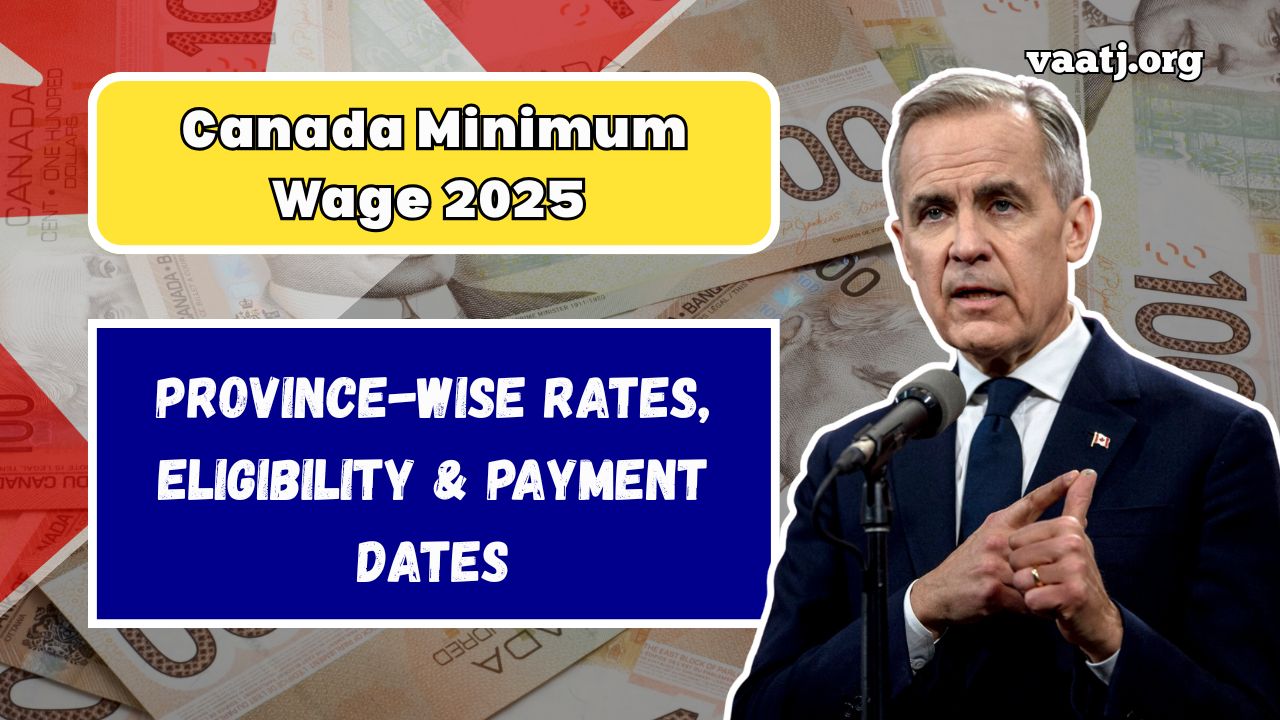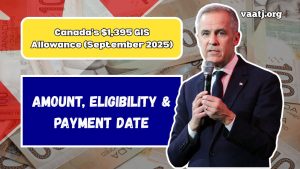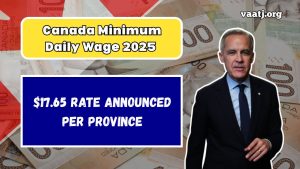The year 2025 marks an important turning point for Canadian workers. Across the country, provinces, territories, and the federal government have announced new minimum wage increases.
These changes are designed to help employees cope with the rising cost of living, from food and rent to utilities and transportation. For millions of people, even a small wage increase can mean the difference between financial stress and stability.
This article breaks down the province-wise minimum wages for 2025, who qualifies, and the effective dates of payment changes.
What is Minimum Wage and Why It Matters
The minimum wage is the lowest legal hourly rate employers must pay most workers. In Canada, it is set by provinces and territories, while a federal minimum wage covers workers in federally regulated industries such as banking, transportation, and telecommunications.
If the provincial minimum wage is higher than the federal rate, workers are entitled to the higher amount. Some provinces also have different rates for students, tipped employees, or homeworkers.
These increases matter because they:
- Reduce the gap between low-wage and high-wage workers.
- Provide more financial stability for families.
- Improve employee motivation and retention.
- Support the economy by boosting consumer spending.
Canada Minimum Wage 2025 – Province-Wise Rates
Here’s a look at the new minimum wages in 2025:
| Province / Territory | Minimum Wage 2025 (per hour) | Effective Date | Notes |
|---|---|---|---|
| Federal (regulated industries) | $17.75 | April 1, 2025 | Applies to federally regulated workers |
| British Columbia | $17.85 | June 1, 2025 | Among the highest in Canada |
| Yukon | $17.94 | April 1, 2025 | Adjusted annually |
| Nunavut | $19.75 | September 1, 2025 | Highest in the country |
| Ontario | $17.20 | October 1, 2024 | Rising to $17.60 on Oct 1, 2025 |
| Nova Scotia | $15.70 | April 1, 2025 | Rising to $16.50 on Oct 1, 2025 |
| Prince Edward Island | $16.00 | Oct 1, 2024 | Rising to $16.50 on Oct 1, 2025 |
| Manitoba | $15.80 | Oct 1, 2024 | Rising to $16.00 on Oct 1, 2025 |
| New Brunswick | $15.65 | April 1, 2025 | Adjusted yearly |
| Newfoundland & Labrador | $16.00 | April 1, 2025 | Annual adjustment |
| Quebec | $16.10 | May 1, 2025 | Tipped workers get lower base pay |
| Saskatchewan | $15.00 | Oct 1, 2024 | Rising to $15.35 on Oct 1, 2025 |
| Alberta | $15.00 | No change since 2018 | Still one of the lowest |
| Northwest Territories | $16.95 | Sept 1, 2025 | Annual review |
Who is Eligible
Eligibility depends on the province and the type of work.
- General workers: Most employees in retail, services, and full-time roles.
- Students: Some provinces pay students slightly less.
- Tipped workers: Employees who earn tips (servers, bartenders) may have lower base wages.
- Homeworkers: In some regions, people working from home have separate minimum wage protections.
- Platform/Gig workers: Provinces like BC are introducing special protections for delivery and ride-share workers.
Effective Dates of Changes
- April 1, 2025: Federal, Nova Scotia, New Brunswick, PEI, Newfoundland & Labrador, Yukon.
- May 1, 2025: Quebec.
- June 1, 2025: British Columbia.
- September 1, 2025: Nunavut and Northwest Territories.
- October 1, 2025: Ontario, Manitoba, Nova Scotia (second increase), PEI, Saskatchewan.
Employers must apply the new wage from the effective date, regardless of pay cycles.
Impact on Workers
The benefits for workers are clear:
- Higher income in each paycheck.
- Financial relief for families facing rising costs.
- Better mental health with less financial pressure.
- Fairness for groups like single parents, women, students, and newcomers who often work in lower-wage jobs.
Impact on Employers
Businesses will face higher payroll costs, which can be difficult for smaller employers. However, there are also positives:
- Lower turnover, as fairly paid employees are more likely to stay.
- Increased productivity, with motivated workers.
- More consumer spending, which benefits local businesses.
Who Benefits Most
Groups benefiting most from the 2025 increases include:
- Students and youth in retail or hospitality.
- Single parents relying on hourly wages.
- Women, who form a large share of the service workforce.
- Immigrant workers starting in entry-level jobs.
For them, the new wages provide financial breathing room and greater equity in the workplace.
The Canada Minimum Wage 2025 increases bring much-needed relief to workers across the country. With rates now ranging from $15.00 to $19.75 per hour, these changes help families cope with inflation and secure a more stable future.
While businesses may face higher costs, the long-term benefits—such as stronger employee retention, increased productivity, and more consumer spending—make the adjustments a positive step toward fairness and economic balance.
FAQs
What is the highest minimum wage in Canada in 2025?
Nunavut leads with $19.75 per hour as of September 1, 2025.
What is the new federal minimum wage in 2025?
The federal minimum wage is $17.75 per hour, effective April 1, 2025.
When do the new minimum wages take effect?
Most increases take effect on April 1, May 1, June 1, September 1, or October 1, 2025, depending on the province.




